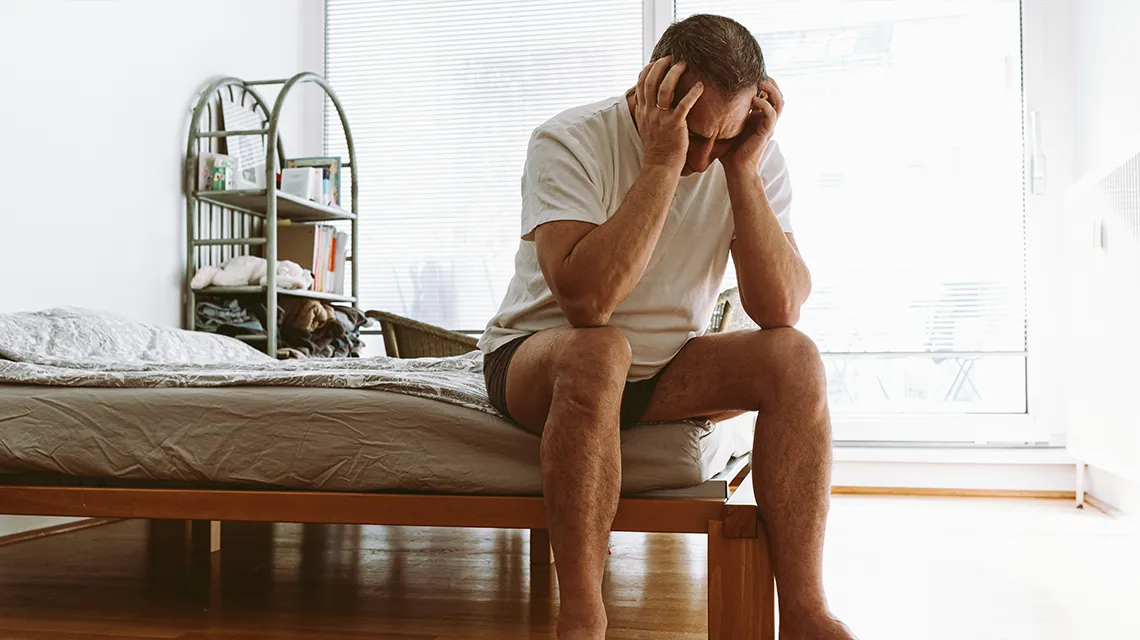Hypogonadism is a clinical condition in which testosterone hormone levels in men are produced below normal. Testosterone is a vital hormone for male sexual development, reproductive functions, muscle mass, bone density, and overall health. Low testosterone levels can lead to numerous negative physical, psychological, and social symptoms and health issues.

Testosterone is the primary sex hormone produced in the testes in men. It plays a critical role during puberty in developing male sexual characteristics such as voice deepening, facial hair growth, increased muscle mass, and the development of the penis and testes. In adult men, it is responsible for:
• Sexual drive (libido) and performance
• Sperm production
• Muscle mass and strength
• Bone density
• Fat distribution and metabolism
• Energy levels
• Mood and cognitive functions
Testosterone production is regulated by a complex hormonal system called the hypothalamic-pituitary-testicular axis:
• The hypothalamus secretes GnRH (Gonadotropin-releasing hormone).
• The pituitary gland produces LH (Luteinizing hormone) and FSH (Follicle-stimulating hormone) in response to GnRH.
• LH stimulates Leydig cells in the testes to produce testosterone.
Hypogonadism is the condition where the body fails to produce sufficient testosterone. There are two main types:
Primary HypogonadismThere is a problem with the testes themselves, and they cannot produce enough testosterone. Examples include:
• Klinefelter syndrome (XXY chromosome)
• Testicular trauma
• Infections (e.g., mumps orchitis)
• Testicular cancer
• Radiation or chemotherapy damage
There is a problem in the hypothalamus or pituitary gland. The testes function normally but do not receive adequate stimulation. Examples include:
• Hypopituitarism
• Hypothalamic diseases
• Chronic illnesses
• Obesity
• Medications (opioids, corticosteroids)
• Aging (partial secondary hypogonadism)
• Reduced sexual desire (libido)
• Erectile dysfunction
• Low sperm count and infertility
• Decreased sexual performance
• Reduced muscle mass and weakness
• Increased body fat, especially in the abdominal area
• Decreased bone density (risk of osteoporosis)
Hypogonadism may also lead to fatigue, lack of energy, reduced body hair, gynecomastia (breast enlargement), testicular atrophy, and psychological symptoms such as depression, poor concentration, lack of motivation, and mood swings.
Adolescent HypogonadismIf hypogonadism starts in childhood or before puberty, symptoms may include:
• Delayed puberty
• Lack of voice deepening
• Underdeveloped penis and testes
• Short stature
• Low muscle mass
Hypogonadism is a complex condition caused by various factors. The reduction in testosterone production can result from congenital disorders to environmental influences. Common causes include:
Congenital and Genetic FactorsKlinefelter syndrome, Kallmann syndrome (a hypothalamic disorder), and other chromosomal anomalies.
Testicular DamageMumps and other viral infections, trauma and surgeries, radiation, and chemotherapy.
Hypothalamic and Pituitary DisordersTumors, infections, trauma, and infiltrative diseases.
Chronic DiseasesDiabetes, chronic kidney failure, liver diseases, and HIV infection.
Medications and ToxinsOpioids, glucocorticoids, chemotherapeutic agents, alcohol, and substance abuse.
AgingTestosterone production naturally declines with age.
In diagnosing hypogonadism, laboratory tests are as important as clinical findings. A detailed medical history is taken, assessing sexual health, energy levels, existing illnesses, and medication use. Physical examination evaluates testicular size, body hair, gynecomastia, and muscle mass.
Laboratory testing typically includes early morning total testosterone measurements. If total testosterone is low or serum albumin is abnormal, free testosterone levels are also assessed. To distinguish the type of hypogonadism, LH and FSH levels are tested, along with prolactin, TSH, and cortisol. If infertility is suspected, semen analysis is done. MRI of the pituitary may be used in secondary hypogonadism cases, and testicular ultrasound may be used to evaluate testicular structure and possible masses.
Hypogonadism is usually treated with testosterone replacement therapy (TRT), which must be administered under specialist supervision and tailored to the individual. The goal of TRT is to bring testosterone levels within the normal range, improving libido, erection, muscle mass, bone density, energy, and mood—factors that enhance quality of life. TRT may be delivered as injections, gels, creams, transdermal patches, or subcutaneous implants.
Other supportive approaches include treatment of underlying conditions, lifestyle changes, psychological support, and hormone-stimulating therapies for those seeking fertility.
Hypogonadism can have significant negative effects on sexual life. Testosterone supports sexual desire and erection mechanisms. With low testosterone:
• Sexual desire decreases
• Erection firmness may diminish
• Sexual performance and satisfaction decline
• Psychologically, self-confidence drops
Most of these issues improve with treatment. However, if erection problems persist despite therapy, phosphodiesterase inhibitors (e.g., sildenafil) may be added.
Hypogonadism not only affects physiological functions but also reduces quality of life due to its psychosocial effects. Depression, anxiety, social isolation, and decreased work performance are common. These effects can be significantly reduced with testosterone therapy.
Hair restoration journey starts here, your confidence, our commitment. Reach out to us today for personalized consultation!


Aşağıdaki formu doldurun, kısa süre içinde sizinle iletişime geçeceğiz.
Füllen Sie das nachstehende Formular aus, und wir werden uns in Kürze mit Ihnen in Verbindung setzen.